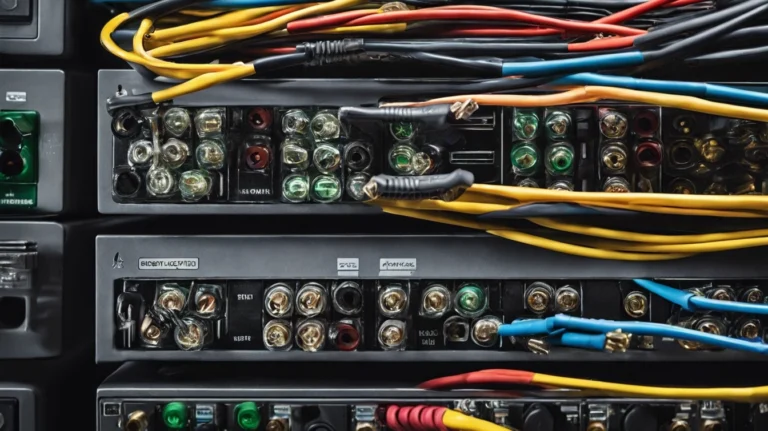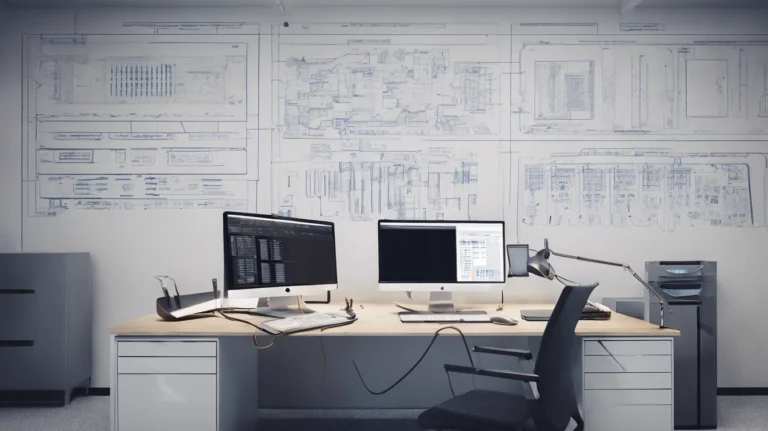In today’s fast-paced business environment, maintaining productivity in the workplace is more challenging than ever. With open office layouts, collaborative spaces, and the constant hum of modern work life, distractions are inevitable. But what if there was a way to reduce these distractions and create a more focused, productive work environment? This is where sound masking comes in.
Sound masking is an innovative solution that helps reduce noise distractions by adding low-level background sound to an environment. This technology is being used in offices, hospitals, call centers, and more to improve privacy, enhance focus, and create a more comfortable atmosphere. In this article, we’ll explore how sound masking can boost productivity in your workplace and the key benefits of implementing it in modern office spaces.
What is Sound Masking?
Sound masking involves the introduction of a subtle, engineered background noise—often compared to the sound of airflow or soft white noise—into an office or workspace. This noise is designed to mask or cover up unwanted sounds, such as conversations, phone calls, and other distractions that can break concentration.
Contrary to popular belief, sound masking doesn’t eliminate noise but makes it harder to distinguish and focus on specific disruptive sounds, allowing employees to work in a more peaceful and focused environment.
How Sound Masking Boosts Productivity
1. Reduces Distractions
Open-plan offices, while great for collaboration, often lead to increased noise levels that can interrupt employees’ focus. In fact, research shows that it can take up to 23 minutes to regain focus after an interruption.
Sound masking helps to minimize distractions by making it harder to overhear nearby conversations or other disruptive noises, allowing employees to concentrate on their tasks. The subtle background sound fills in the gaps between other noises, reducing the sharpness of sudden sounds like a ringing phone or a dropped object.
2. Enhances Privacy
In many work environments, maintaining privacy is critical, especially when it comes to confidential conversations or sensitive business discussions. Whether it’s in a meeting room or a private office, overheard conversations can lead to breaches of confidentiality and discomfort among employees.
Sound masking provides an extra layer of speech privacy by making it more difficult for conversations to be overheard. This not only helps to protect sensitive information but also gives employees more confidence when discussing private matters, such as performance reviews or client negotiations.
3. Creates a Calmer Environment
Excessive noise can lead to stress and anxiety in the workplace. Employees who are constantly distracted by conversations, phone calls, and office equipment noise may experience heightened stress levels, which can negatively impact their well-being and productivity.
By masking unwanted noise, sound masking systems help to create a calmer and more pleasant environment. The consistent, gentle sound provides a sense of tranquility, making it easier for employees to focus on their work without feeling overwhelmed by the bustling office atmosphere.
4. Increases Focus and Concentration
For employees who require deep focus—whether they’re writing, coding, designing, or analyzing data—sound masking can be a game-changer. The low-level sound helps to create a cocoon of focus, allowing workers to immerse themselves in their tasks without being distracted by their surroundings.
In addition to improving individual concentration, sound masking can also make group work more effective. In environments where collaboration is key, such as conference rooms or open project spaces, sound masking allows teams to communicate without feeling like they’re disturbing the rest of the office.
5. Improves Acoustic Comfort
Every office has areas with different sound levels. Some spaces, like lobbies and kitchens, tend to be noisier, while others, like private offices or conference rooms, need a quieter environment. Sound masking helps create a more balanced acoustic environment by managing the sound levels in various parts of the office.
It’s especially useful in open offices where there’s little to no soundproofing between workstations. The result is a workspace where employees feel more comfortable, both in terms of noise levels and their ability to focus on tasks.
Key Areas for Sound Masking in the Workplace
Not every area of an office will benefit equally from sound masking, so it’s important to target the right locations. Here are a few key areas where sound masking can make the biggest impact:
1. Open Office Spaces
In open-plan offices, employees are often exposed to a constant stream of background noise, from conversations to keyboard clicks. Sound masking helps create an auditory boundary that improves concentration and reduces distractions for workers in these high-traffic areas.
2. Conference Rooms
Meetings and discussions in conference rooms often involve sensitive information. By implementing sound masking, you can improve speech privacy and ensure that confidential conversations stay within the room, rather than leaking out into nearby work areas.
3. Private Offices
While private offices are quieter than open spaces, they still benefit from sound masking. The added layer of sound helps to protect the privacy of sensitive conversations and improves the overall comfort of the office environment.
4. Reception Areas
Reception areas are often the busiest part of an office, with visitors, phone calls, and office equipment contributing to a constant buzz of activity. Sound masking can reduce the noise level in these spaces, creating a more professional and welcoming atmosphere for clients and employees alike.
5. Break Rooms and Common Areas
While these areas are meant for relaxation and casual conversation, noise from break rooms can easily spill into adjacent workspaces. By adding sound masking in common areas, you can prevent the noise from disrupting employees who are focused on their work nearby.
Implementing Sound Masking in Your Office
If you’re considering implementing sound masking in your office, there are a few key factors to keep in mind:
- Customization: Sound masking systems can be tailored to fit the unique layout of your office. A well-designed system will account for the acoustics of each area, from open-plan workstations to private meeting rooms.
- Adjustable Settings: Many sound masking systems allow for adjustable volume settings, so you can fine-tune the sound levels to match the needs of different areas in your office.
- Professional Installation: To get the most out of your sound masking system, it’s important to have it professionally installed. A knowledgeable provider, like Teksetra, can help you design and implement a sound masking solution that fits your specific workspace requirements.
In today’s dynamic work environments, sound masking offers a practical and effective solution for reducing distractions, improving focus, and enhancing privacy. By incorporating sound masking into your office design, you can create a more focused and productive work environment where employees can thrive.
At Teksetra, we specialize in providing custom sound masking solutions that meet the unique needs of modern offices. Whether you’re looking to improve privacy, reduce distractions, or create a more comfortable workspace, our team of experts can help you design and implement the right solution for your office.
Ready to boost productivity and focus in your workplace? Contact Teksetra today to learn more about how sound masking can transform your office environment.





